
views
Taking the Kitten to the Vet
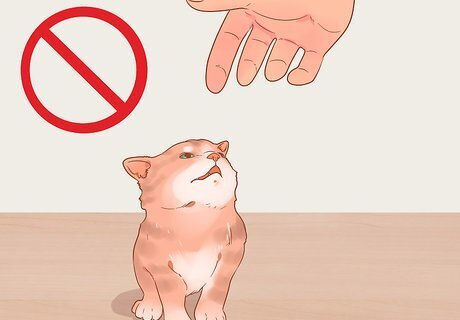
Avoid touching the kitten with bare hands. Feral kittens aren't vaccinated. This means that if they bite your hand, you are at risk of contracting infections or diseases from the kitten. If the kitten is very small or is trapped in an enclosed space and you need to pick it up, wear a thick heavy-duty glove. Purchase heavy-duty gloves from a hardware store.

Place a bowl of food in the back of a cat trap with a trail to the front gate. Start the trail at the entrance of the trap. The trail of food will lure the kitten to the back of the trap, which will trigger the trap to automatically lock. Kittens are most likely to leave their mum in the early evening, so place the food in the trap in the afternoon. Padlock the trap to your fence if you are worried about it going missing. Buy a packet of cat food that is specifically designed for kittens from a pet shop. Purchase or hire a cat trap and carrier from a vet or pet shop.

Trap the kitten in a carrier bag using the cat trap. Once the kitten is in the cat trap, the walls will lock around the kitten and keep it contained until you open the gate. Place the opening of the carrier bag in front of the gate and wait for the kitten to enter the carrier. Slide the carry bag door to the closed position as soon as the kitten walks into the carrier. Many vets will loan you a carry bag for free or for a low price.
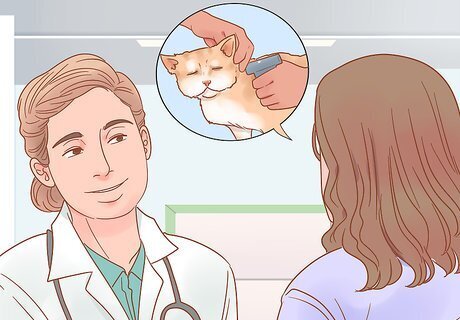
Ask a vet to scan the kitten for a microchip. If the kitten is microchipped, this shows that it has had an owner at some point. Ask the vet to give you the contact details of the owner of the kitten. Contact the owner to let them know that you have found their kitten. Ask if they want the kitten back before you adopt it as your own. A vet appointment is normally about $50, but many vets will scan a stray free of charge. Contact your local vet to receive a quote. If the cat doesn't have a microchip, it is safe to assume that it is stray or feral and is free to adopt.

Vaccinate the kitten and give it any necessary medication. Ask the vet to give the kitten a general check up. Feral kittens often have fleas, worms, infections, injuries, and diseases. Ask the vet to prescribe any necessary medications to treat these ailments. Ask the vet if the kitten has been neutered. There will likely be an extra charge for vaccinations and any required medications. Ask the vet to give you a price sheet with all the relevant charges. Place the medication in the kitten food, or as directed by the vet.
Introducing the Kitten to your Home
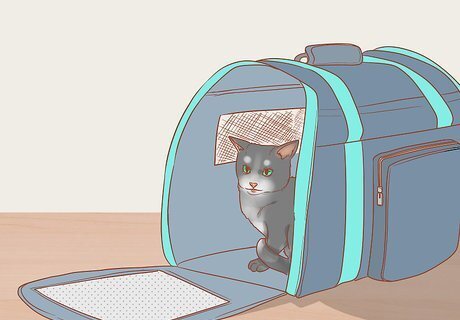
Keep the kitten in its carrier bag for 2 days and avoid handling it. Your kitten requires time to get used to humans. Talk softly to your kitten often while it is in the box. Place food and a litter pan inside the carrier to help the kitten get used to using it. If there isn't room in the carrier for the kitten's food and litter pan, place the carrier in a small room. Leave the gate open so that the kitten can leave the carrier to eat and use the litter pan.

Place the kitten in a small room with a cardboard box to hide in. Until the kitten is comfortable with humans, keep it in a room where it can have some quiet and privacy. The bathroom or laundry work well, as there aren't many nooks and crannies for the kitten to hide in. Close all the windows to stop the kitten from escaping. Place a cardboard box in the room so the kitten has somewhere to hide. Also, place the kitten's food and water in the room and check on them regularly. Remove any items from the room that could fall on the kitten. Let the kitten roam around the house once it is comfortable being touched by humans.
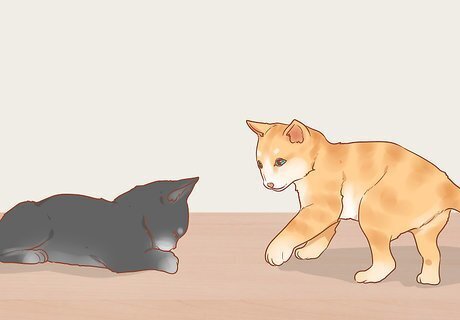
Introduce other pets to the kitten slowly. Your kitten will likely feel overwhelmed by new animals. Start by using a scent handshake to acquaint the kitten with your other pets. Place an item in the room with the kitten that your pets have used, such as a toy or blanket, and do the same to introduce the kitten's scent to your pets. Then, introduce the animals in a neutral space while monitoring them closely. Don't bring your pets into the kitten's sanctuary as this is likely to upset the kitten and may result in aggression or fearfulness. Make sure to supervise your pets with the kitten at all times!

Ask your friends to pat your kitten once it stops biting. This helps the kitten to get used to other people and teaches them that humans are safe. Encourage your friends to pick up your kitten and gently stroke them. This is an important step in the taming process.
Bonding with the Kitten
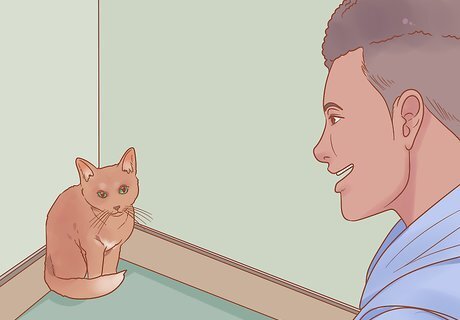
Talk softly to the kitten throughout the day. Talking to the kitten will help it become familiar with your voice and help it bond with you. If you don't know what to say to the kitten, try reading books out loud. Aim to spend a maximum of 15 minutes at a time with the kitten. Avoid making loud or abrupt noises around the kitten, as this can scare it.
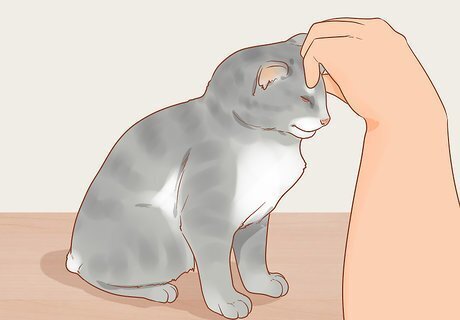
Mimic the grooming motion of a cat to help it bond with you. Your kitten will gradually get used to your touch and scent, and will be less afraid of being stroked. Use your thumb and index finger to lightly tug the kitten's hair around its face. This makes the kitten feel like it is being groomed by its mother. Handle the kitten for brief periods at a time to help it get used to you. Don't worry if your kitten won't let you touch them much at first, as this is normal behavior for a feral kitten. Move your hand slowly and gently to avoid scaring it. Continue to talk to the kitten if it won't let you stroke it.
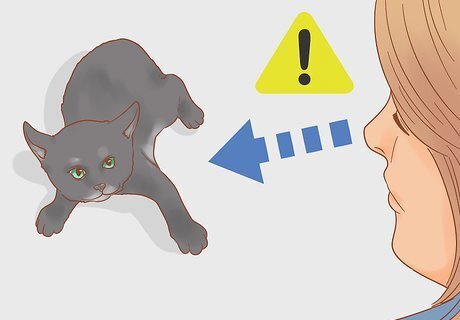
Avoid extended eye contact with the kitten to help it feel safe. Many feral kittens will interpret direct eye contact as a threat. Look at the kitten and then quickly shift your gaze away. This will help the kitten to feel safe and to realize that you're not a predator. Gradually increase the amount of eye contact that you give your kitten.

Play with the kitten each day. This is a great way to bond with your kitten. Use cat toys, such as toy mice, lasers, and soft toys. Move the toys around and wait for the kitten to chase them. If the kitten doesn't respond, wait a few days and then try again. Avoid making abrupt movements while you are playing with the kitten, as this can scare them. Purchase cat toys from a pet shop.



















Comments
0 comment